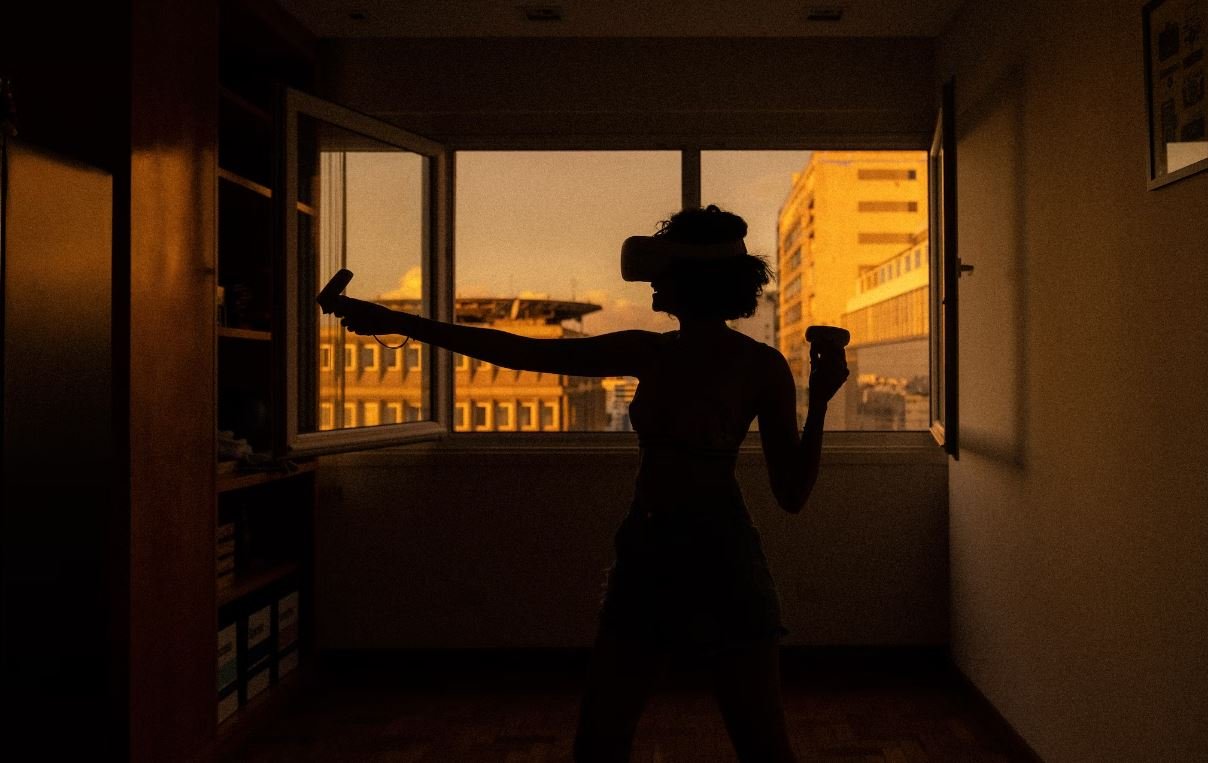Good Vampire Prompts
Vampires have been a popular topic in literature and film for centuries, captivating audiences with their immortality and supernatural abilities. Whether they are depicted as terrifying creatures or mysterious and alluring beings, vampires continue to fascinate and inspire writers and storytellers alike. If you are a writer looking for inspiration or a fan of vampire stories, here are some good vampire prompts to get your creative juices flowing.
Key Takeaways:
- Good vampire prompts are essential for writers seeking inspiration in the vampire genre.
- Vampire prompts can range from traditional Gothic tales to modern urban fantasies.
- Exploring unique aspects of vampire lore and mythology can add depth to your story.
1. **Imagine a world where vampires are the ruling class**, and humans are their subservient subjects. How would this power dynamic shape society and relationships?
2. *In a small, unsuspecting town, a vampire hunter discovers that their next target is not what they expected.*
3. **Create a vampire detective** – someone with supernatural abilities who uses their skills to solve mysteries and protect the human world from supernatural threats.
4. *A centuries-old vampire finds themselves falling in love with a mortal, challenging their beliefs and desires for the first time in centuries.*
Unusual Vampire Characteristics:
One way to make your vampire story stand out is to play with traditional vampire characteristics. Here are some unique characteristics to consider:
- Vampires who can walk in daylight due to a rare genetic mutation.
- *Vampires who feed on emotions rather than blood, leaving their victims emotionally drained.*
| Characteristics | Vampire Type |
|---|---|
| Sparkling skin in sunlight | Twilight series |
| Ability to transform into a bat | Classic vampire mythology |
| Retains human memories and emotions | Interview with the Vampire |
5. **Set your vampire story in an unexpected historical period**, such as ancient Egypt or the Victorian era. How would vampires interact with historical events and figures?
6. *A vampire develops a unique power that threatens to unravel the centuries-old balance between vampires and humans.*
7. **Create a world where vampires are celebrities**, constantly in the public eye but hiding their true nature from adoring fans.
Types of Vampire Societies:
Vampire societies can range from secretive covens to hierarchical structures. Here are some intriguing vampire society concepts:
- A vampire society where membership is determined by blood purity.
- *A vampire society governed by a council of elders who enforce strict laws and regulations.*
| Vampire Society | |
|---|---|
| Independent covens scattered across the globe | The Vampire Chronicles |
| A strict hierarchy with a designated ruler | True Blood |
| Secret societies hidden within human governments | The Vampire Diaries |
If you are looking to immerse yourself in the vampire genre, these prompts can serve as a starting point for your storytelling adventure. Whether you choose to delve into vampire romance, mystery, or explore the horror side of the genre, the possibilities are endless. So grab your pen and let your imagination take flight into the world of vampires!

Common Misconceptions
Good Vampires Can’t Go Out in Sunlight
One common misconception about good vampires is that they cannot go out in sunlight. While sunlight does have an adverse effect on traditional vampires, good vampires have evolved to tolerate and even enjoy the sunlight. They may have certain precautions, such as wearing protective clothing or using sunscreen, but they can still move around during daytime.
- Good vampires can maintain their strength and abilities in sunlight.
- They absorb sunlight to gain energy and enhance their powers.
- Some good vampires have the ability to manipulate sunlight for defensive purposes.
Good Vampires Only Drink Human Blood
Another common misconception is that good vampires can only consume human blood. In reality, good vampires can survive on various sources of blood, including animal blood or blood substitutes. They have learned to control their instincts and embrace a more ethical approach to feeding, focusing on obtaining blood without harming humans.
- Good vampires often feed on animal blood to sustain themselves and minimize harm to humans.
- They may create their own blood substitutes using specialized ingredients.
- Some good vampires choose to collaborate with willing human donors who provide consensual blood.
Good Vampires Are Immortal
Many people mistakenly believe that good vampires are immortal beings who will never age or die. While good vampires do have enhanced longevity compared to humans, they are not invincible. They can still sustain injuries and suffer a natural death, although it might take significantly longer for them to age or succumb to illnesses.
- Good vampires may age at a slower rate than humans but will eventually show signs of aging.
- They are not immune to diseases or permanent injuries.
- The lifespan of good vampires can still vary depending on several factors, such as their individual biology and the supernatural world they inhabit.
Good Vampires Turn Into Bats
A popular misconception perpetuated in various media is that good vampires have the ability to transform into bats. While this may be true for certain traditional vampires, good vampires typically do not possess this shape-shifting ability. They have their own unique set of skills and powers which vary widely among individuals.
- Good vampires can possess a range of supernatural abilities, including superhuman strength, speed, and heightened senses.
- Some good vampires may have additional powers like mind control or shape-shifting into specific animals, but bats are not the default form.
- The ability to transform into a bat is not a defining characteristic of good vampires.
Good Vampires Are Always Evil
One of the most significant misconceptions is that all vampires, regardless of their nature, are inherently evil. Good vampires, however, break this stereotype as they consciously choose to use their powers for the greater good and uphold a moral code. They can coexist with humans harmoniously while protecting them from threats.
- Good vampires strive to maintain a balance between their vampire nature and their humanity.
- They often actively work to protect innocent lives and combat malevolent supernatural forces.
- Their actions and choices revolve around empathy, compassion, and seeking justice.

The Origins of Vampires in Mythology
Vampires have been a subject of fascination and fear throughout history. From ancient folklore to modern pop culture, the legends surrounding these creatures have evolved. This table showcases various mythological vampires from different cultures and time periods.
| Vampire | Origin | Description |
|---|---|---|
| Nosferatu | Romania | A pale, gaunt creature that avoids sunlight and drinks blood to sustain itself. |
| Chiang-shih | China | A stiff corpse that hops around at night and feeds on the life force of humans. |
| Lamia | Greece | A seductive vampire who preys on young children and drinks their blood. |
| Pisacha | India | A demonic vampire that possesses the body of a dead person and feasts on flesh. |
| Impundulu | South Africa | A bird-like creature that harnesses lightning and drinks the blood of its victims. |
The Worldwide Vampire Legends
Vampire legends have spread across the globe, each with its unique characteristics and folklore. This table highlights some of the most well-known vampiric creatures from different countries.
| Country | Vampire Name | Description |
|---|---|---|
| Germany | Draugr | A reanimated corpse with a insatiable thirst for blood and a powerful aura of decay. |
| Brazil | Curupira | A forest spirit that transforms into a vampire and preys on hunters who harm nature. |
| Russia | Vykolak | A vampire that has a dual nature and appears as both a wolf and a human. |
| Japan | Ubume | A spirit of a woman who died in childbirth, often appearing as a female vampire. |
| Spain | Estrie | A vampire that transforms into a massive black bird and attacks livestock. |
Real-Life Vampire Community Statistics
Contrary to popular belief, there are individuals who identify as real vampires and form communities based on their shared experiences. This table presents some facts and figures about the real vampire community.
| Statistic | Value |
|---|---|
| Estimated number of vampires worldwide | 10,000 |
| Percentage of vampires who consume blood | 67% |
| Age group with the highest vampire population | 25-34 |
| Common professions among vampires | Writer, artist, therapist |
| Number of vampire support groups globally | 35 |
Famous Vampire Movies and TV Shows
Vampires have been a recurring theme in the world of entertainment, captivating audiences across the globe. This table highlights some of the iconic vampire movies and TV shows that have made an impact in popular culture.
| Title | Release Year | Genre |
|---|---|---|
| Dracula | 1931 | Horror |
| Buffy the Vampire Slayer | 1997 | TV Series |
| Interview with the Vampire | 1994 | Drama |
| Twilight | 2008 | Romantic Fantasy |
| The Vampire Diaries | 2009 | TV Series |
List of Vampire Superpowers
Vampires possess supernatural abilities that set them apart from humans. This table presents a selection of common vampire superpowers found in various vampire mythologies and fictional universes.
| Superpower | Description |
|---|---|
| Superhuman strength | Vampires possess immense physical strength, enabling them to overpower most beings. |
| Enhanced senses | Their senses of sight, hearing, and smell are greatly heightened, allowing them to detect even the slightest changes in their environment. |
| Rapid healing | Vampires heal from injuries much faster than humans, regenerating damaged tissues in a matter of minutes. |
| Shape-shifting | Vampires can transform into bats, wolves, or even mist, making it easier for them to move undetected. |
| Mind control | Some vampires possess the ability to influence the thoughts and actions of others, bending them to their will. |
Vampire Legends in Literature
Many authors have drawn inspiration from vampire folklore throughout history, contributing to the vast array of vampire novels. This table lists some renowned literary works that explore the theme of vampirism.
| Author | Book | Year Published |
|---|---|---|
| Bram Stoker | Dracula | 1897 |
| Anne Rice | Interview with the Vampire | 1976 |
| Stephenie Meyer | Twilight | 2005 |
| Charlaine Harris | Dead Until Dark | 2001 |
| Richard Matheson | I Am Legend | 1954 |
Historical Figures Associated with Vampires
Throughout history, various individuals have been linked to vampire legends due to their unusual behavior or physical attributes. This table mentions some historical figures who were associated with vampirism during their lifetime.
| Person | Country | Connection to Vampires |
|---|---|---|
| Countess Elizabeth Báthory | Hungary | Rumored to have bathed in the blood of young girls to preserve her youth. |
| Arnold Paole | Serbia | Believed to have become a vampire after returning from the dead. |
| Peter Plogojowitz | Serbia | Reported to have risen from the dead and attacked villagers. |
| Vlad the Impaler | Romania | Inspiration behind Dracula, known for his brutal methods of execution. |
| Auguste Delagrange | France | Considered a vampire due to his unusual physical appearance and desire for blood. |
Vampires in Modern Society
Vampires continue to captivate popular culture, making their mark in various industries. This table showcases different aspects of vampires’ influence in modern society.
| Domain | Example |
|---|---|
| Literature | The Twilight Saga by Stephenie Meyer |
| Music | “Living Dead Girl” by Rob Zombie |
| Fashion | Gothic-inspired clothing and accessories |
| Beauty | Vampire-inspired makeup and nail art |
| Technology | Vampire-themed mobile games and apps |
Vampires have become a timeless source of inspiration and intrigue. From ancient legends to modern fictional portrayals, the allure of vampires continues to fascinate people around the world. Whether it be through myth, literature, movies, or even real-life communities, the vampire remains an enduring and captivating figure in our collective imagination.
Frequently Asked Questions
What are some good vampire prompts for storytelling?
Some good vampire prompts for storytelling include:
- An ancient vampire awakens from a deep slumber.
- A vampire falls in love with a human and struggles to maintain their secret.
- A vampire hunter becomes a vampire and must confront their new nature.
- A vampire coven finds themselves in the middle of a war between rival factions.
- A young vampire discovers their abilities and tries to find their place in the supernatural world.
How to create suspense and intrigue when writing vampire stories?
To create suspense and intrigue when writing vampire stories, consider incorporating the following elements:
- Unexplained disappearances or deaths occurring in the story’s setting.
- Mysterious and vague clues that hint at the presence of vampires.
- Unexpected twists and revelations about vampire characters and their motives.
- A sense of impending danger or threat constantly looming over the protagonist.
- Secret societies or hidden vampire factions that have a larger agenda.
What are some common vampire tropes to avoid?
Some common vampire tropes to avoid include:
- Glittering vampires who are impervious to sunlight.
- Superhumanly strong and invincible vampires with no weaknesses.
- Vampires who are only portrayed as evil creatures with no redeeming qualities.
- Overly romanticized and melodramatic vampire-human love stories.
- Vampires who are portrayed as mindless monsters without individuality or complexity.
How can I add depth to my vampire characters?
To add depth to your vampire characters, consider the following tips:
- Give them unique personalities, flaws, and internal conflicts.
- Explore their backstory and motivations for becoming or being a vampire.
- Show their struggles with morality and balancing their bloodlust with their humanity.
- Create complex relationships with other characters or vampire clans.
- Have them go through character development arcs and personal growth.
What are some possible weaknesses for vampires in a story?
Some possible weaknesses for vampires in a story include:
- Aversion to sunlight, which weakens or burns them.
- Repulsion or harm caused by religious symbols or holy water.
- Beheading or destruction of their heart to kill them permanently.
- Thirst for blood, leading to potential loss of control or frenzy.
- Vulnerability to certain herbs or substances, such as garlic or silver.
Can vampires have different abilities or powers?
Yes, vampires can have different abilities or powers depending on the story. Some common vampire abilities include:
- Enhanced strength, speed, and senses.
- Ability to heal rapidly from injuries.
- Heightened persuasion or mind control.
- Transformation into animals or mist.
- Ability to mesmerize or hypnotize others.
How can I make my vampire story unique and stand out?
To make your vampire story unique and stand out, consider the following suggestions:
- Introduce original vampire lore or worldbuilding elements.
- Create multi-dimensional characters with complex motivations and relationships.
- Explore unconventional story settings or time periods.
- Incorporate unexpected plot twists and turns.
- Address thought-provoking themes and social commentary.
Should I stick with traditional vampire traits or create something new?
Whether to stick with traditional vampire traits or create something new is up to your creative vision. While traditional traits provide familiarity to readers, introducing unique aspects can make your story more distinct. Consider the preferences of your target audience and the type of story you want to tell when making this decision.
Can vampire stories be suitable for different genres, like romance or comedy?
Yes, vampire stories can be suitable for different genres. They can be blended with elements of romance, comedy, mystery, fantasy, or even science fiction. The genre you choose will depend on the tone and themes you want to explore in your story.




